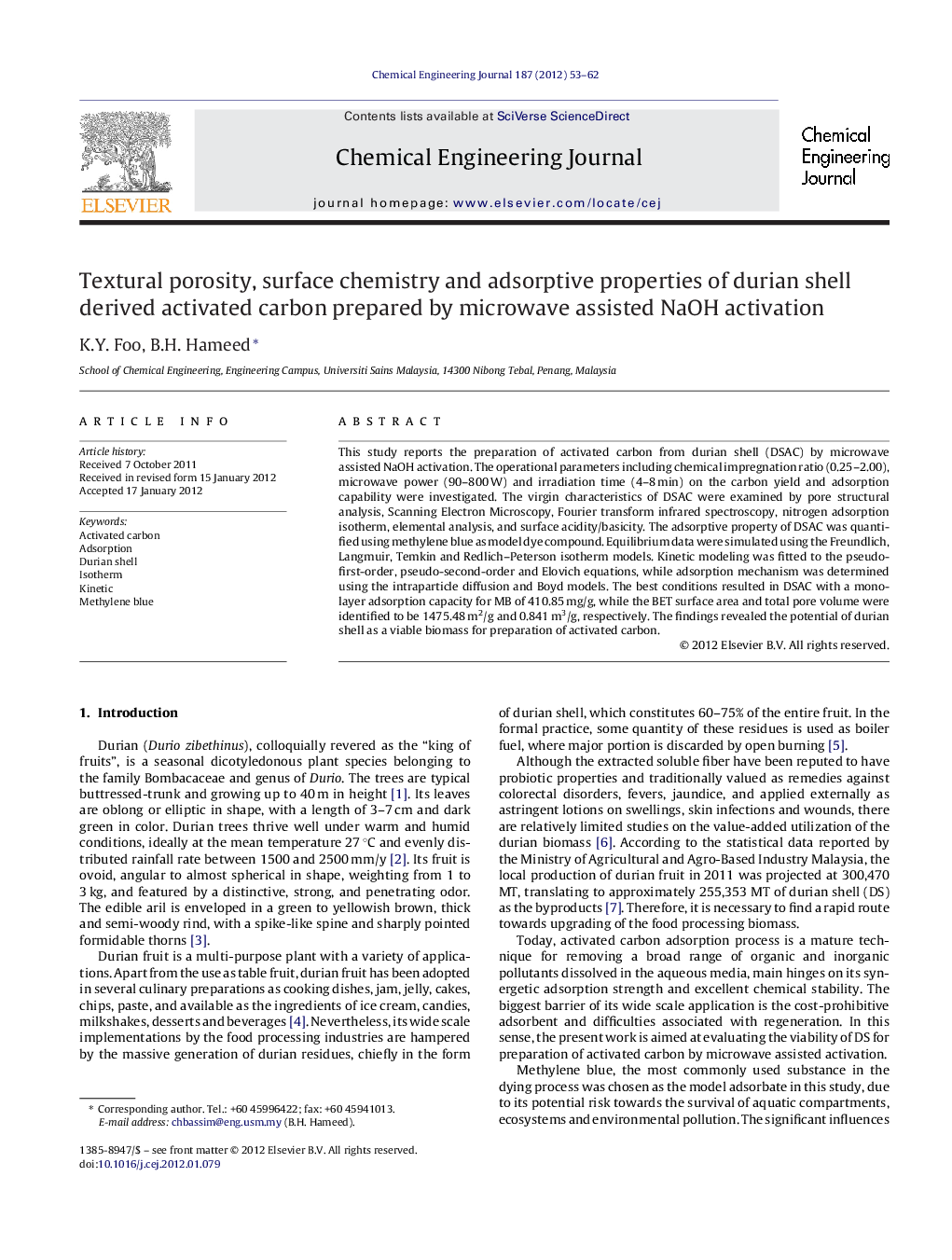| Article ID | Journal | Published Year | Pages | File Type |
|---|---|---|---|---|
| 150038 | Chemical Engineering Journal | 2012 | 10 Pages |
This study reports the preparation of activated carbon from durian shell (DSAC) by microwave assisted NaOH activation. The operational parameters including chemical impregnation ratio (0.25–2.00), microwave power (90–800 W) and irradiation time (4–8 min) on the carbon yield and adsorption capability were investigated. The virgin characteristics of DSAC were examined by pore structural analysis, Scanning Electron Microscopy, Fourier transform infrared spectroscopy, nitrogen adsorption isotherm, elemental analysis, and surface acidity/basicity. The adsorptive property of DSAC was quantified using methylene blue as model dye compound. Equilibrium data were simulated using the Freundlich, Langmuir, Temkin and Redlich–Peterson isotherm models. Kinetic modeling was fitted to the pseudo-first-order, pseudo-second-order and Elovich equations, while adsorption mechanism was determined using the intraparticle diffusion and Boyd models. The best conditions resulted in DSAC with a monolayer adsorption capacity for MB of 410.85 mg/g, while the BET surface area and total pore volume were identified to be 1475.48 m2/g and 0.841 m3/g, respectively. The findings revealed the potential of durian shell as a viable biomass for preparation of activated carbon.
Graphical abstractFigure optionsDownload full-size imageDownload as PowerPoint slideHighlights► Highlight the renewable use of durian shell. ► Evaluate the effects of preparation and operational parameters. ► Short activation time of 6 min and low chemical impregnation ratio of 1.50. ► High BET and Langmuir surface area of 1475.48 and 2225.22 m2/g. ► Monolayer adsorption capacity of 410.85 mg/g and carbon yield of 80.37%.
